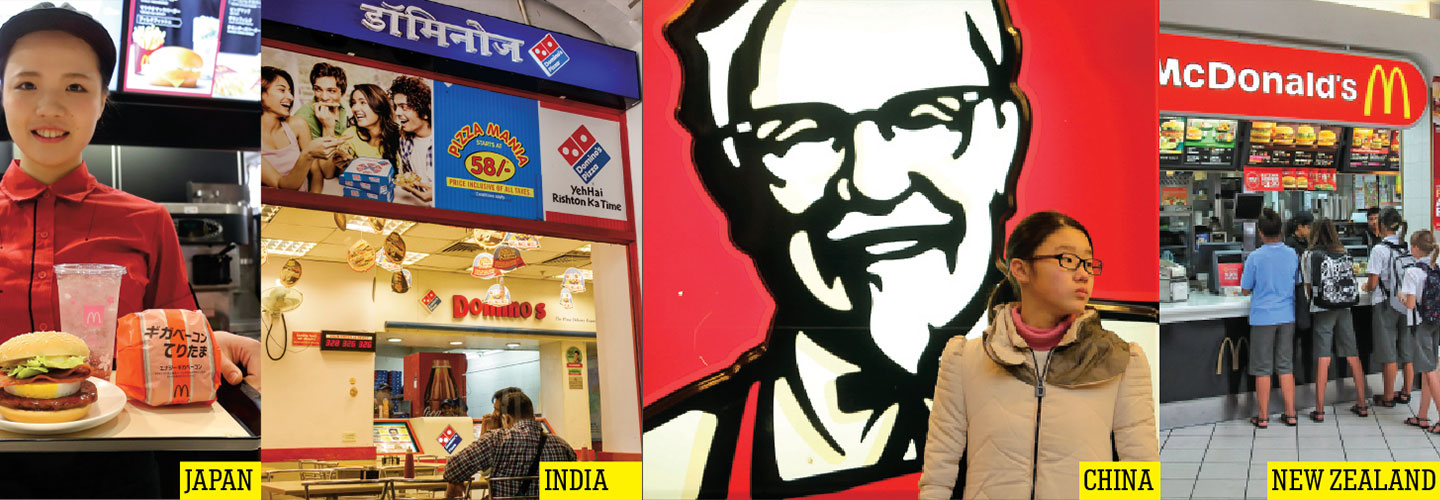Imagine you’re lucky enough to spend a vacation in Japan. It’s a great adventure.
You tour shiny gold temples and ancient palaces. You even try some sushi. And as the slippery raw fish slides down your throat, a funny thing happens.
Gulp.
You start feeling homesick.
But wait! Around the next corner, there’s a familiar sight. Rising above your head are the golden arches of McDonald’s.
You walk in and squint at the menu. They have Big Macs and burgers. But there’s also something called the Ebi Filet-O. That’s a deep-fried shrimp sandwich. And maybe you want some Ume Fries with that? They’re french fries flavored with sour-plum powder.
Something happened to McDonald’s on its way to Japan. Where is the menu you know and love?
Imagine you are in Japan. You are on vacation.
You visit temples. You visit palaces. You try some sushi. That’s raw fish. It’s served in a special way. The fish slides down your throat.
Gulp.
You start feeling homesick.
But wait! You see a familiar sight. It’s the golden arches of McDonald’s.
You walk into the McDonald’s. You look at the menu. It has burgers. But it also has something called the Ebi Filet-O. That’s a deep-fried shrimp sandwich. And it has Ume Fries. Ume is a sour-plum powder.
McDonald’s is different in Japan. Where is the menu you know and love?
Imagine you’re fortunate enough to spend a vacation in Japan. You have an amazing adventure.
You tour dazzling gold temples and ancient castles, and you even try some sushi. As the slippery raw fish slides down your throat, a strange feeling comes over you.
Gulp.
You’re suddenly homesick.
But wait! Around the next corner, there’s a familiar sight—rising above your head are the golden arches of McDonald’s.
You walk in and stare up at the menu boards. They list Big Macs, burgers, and . . . something called the Ebi Filet-O—which is a deep-fried shrimp sandwich. And would you like some Ume Fries with that? These fries are flavored with sour-plum powder.
Something has happened to this McDonald’s. Where is the menu you know and love?

